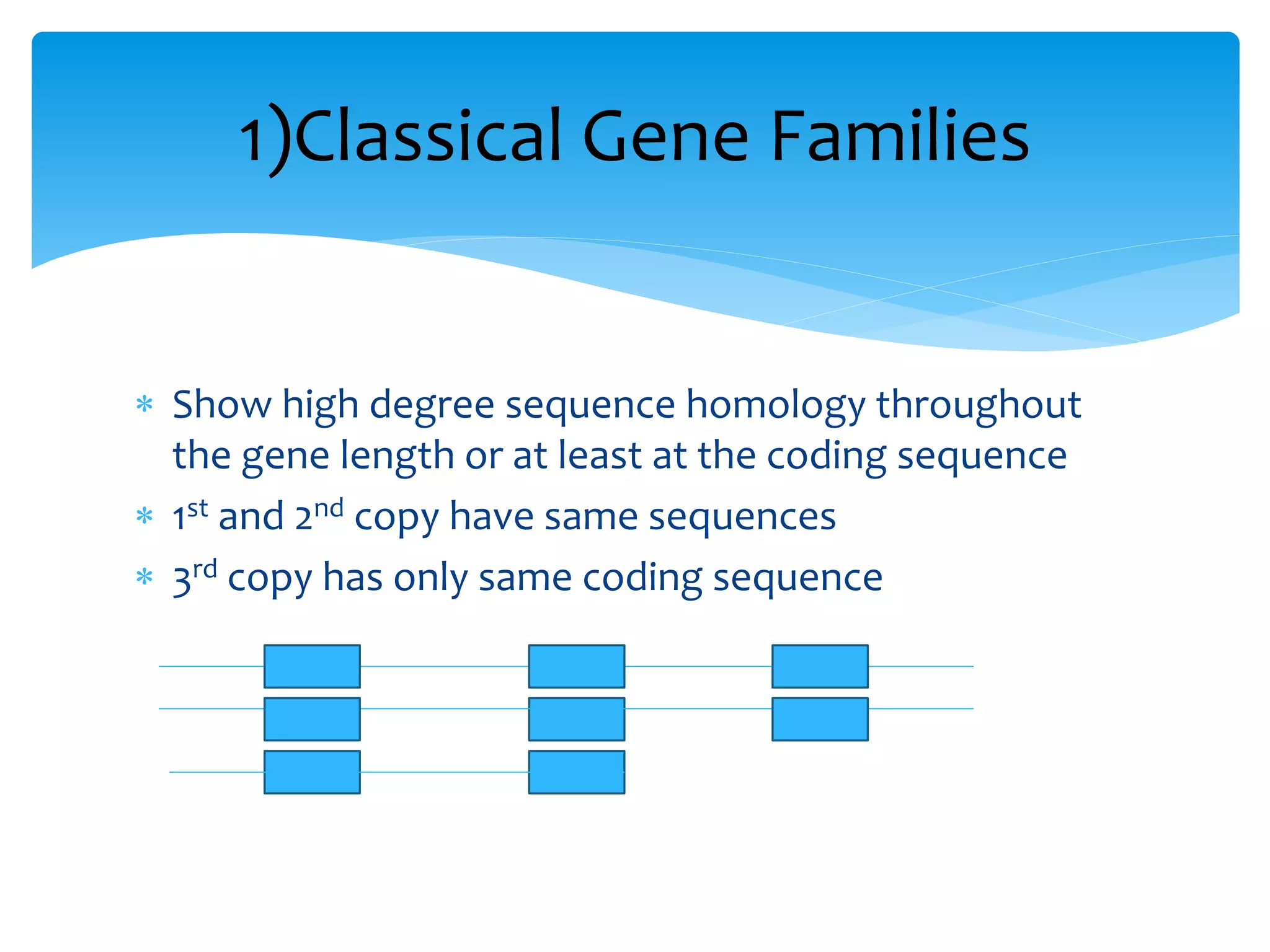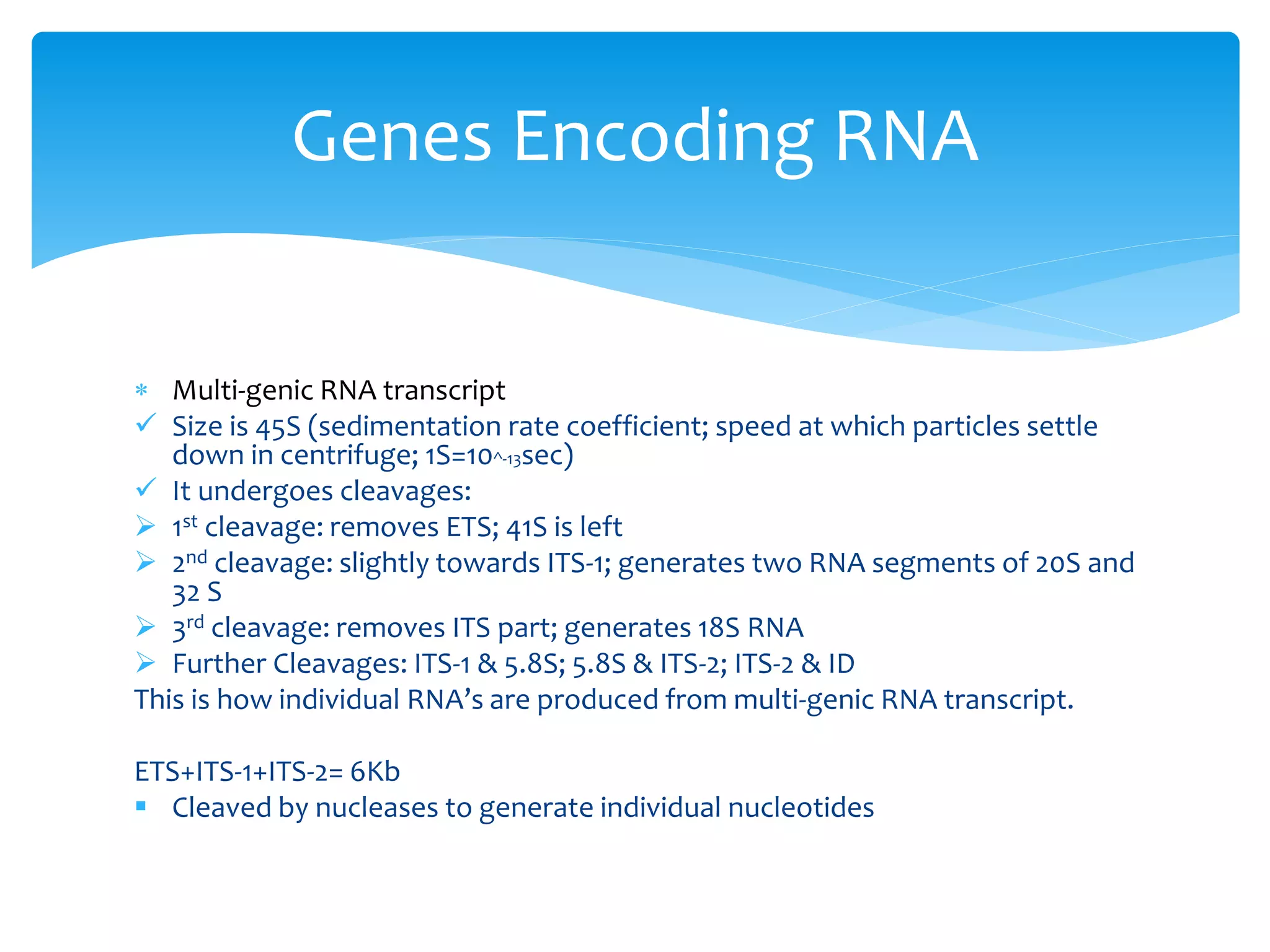The document outlines the classification and characteristics of repeated sequences and multigene families in the human genome, describing the composition and functional roles of various gene families, including classical gene families, genes encoding domains, genes encoding motifs, and gene super-families. It also details the presence of pseudogenes and extragenic DNA, as well as the arrangement and clustering of genes, highlighting their significance in genomic structure and function. Additionally, it categorizes types of DNA repeats, including satellite and microsatellite DNA, and interspersed repeats, emphasizing their role in genetic variability and evolution.
















































